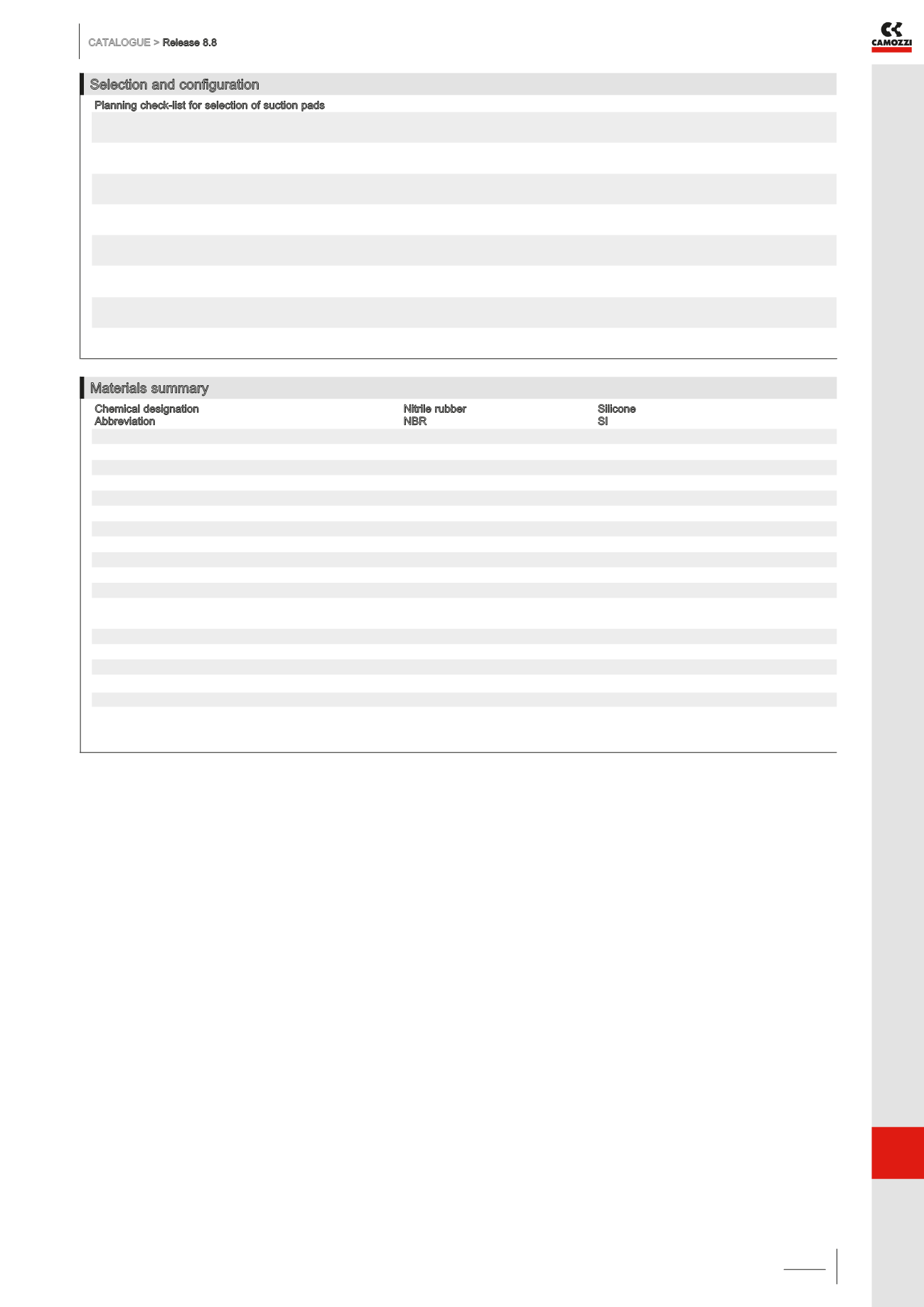

CATALOGUE >
Release 8.8
APPENDIX >
Technical information about products
a
/3.07
Materials summary
Chemical designation
Nitrile rubber
Silicone
Abbreviation
NBR
SI
Wear resistance
••
•
Resistance to permanent deformations
••
••
General weather resistance
••
•••
Resistance to ozone
•
••••
Resistance to oil
••••
•
Resistance to fuels
••
•
Resistance to alcohol, ethanol 96 %
••••
••••
Resistance to solvents
••
••
General resistance to acids
•
•
Resistance to steam
••
••
Tensile strength
••
•
Abrasion value in mm
3
s. DIN 53516
100-120
180-200
(approx.)
at 60 Sh.
at 55 Sh.
Specific resistance [ohm * cm]
-
-
Short-term temperature resistance in °C
from -30° to +120°
from -60° to +250°
Long-term temperature resistance in °C
from -10° to +70°
from -30° to +200°
Shore hardness to DIN 53505
from 40 to 90
from 30 to 85*
Colour/Coding
black
white
* After-bake of silicone 10 h/160 °C = +5 ...10 Shore A
••••
excellent
•••
very good
••
good
•
poor to satisfactory
Selection and configuration
Planning check-list for selection of suction pads
What are the workpiece dimensions and weight?
This is important data for the suction force calculation and to establish the required suction force
and number of suction pads (see technical information).
How is the workpiece surface
It determines the kind of suction pad (material, shape, dimensions).
(rough, structured, smooth)?
Could the workpiece be dirty?
This is important information to select the suction pad dimensioning (see technical information)
If so, what kind of dirt?
and also for the design of the dust filter.
What is the highest workpiece temperature?
Temperature is important to select the suction pad material.
At temperatures above 70°C the use of silicone versions should be considered.
Is an accurate gripping/placing/positionining,
Determines the structure, the type and the version of the suction pad.
required?
What is the cycle time?
This data is important for the dimensioning and plays a part in the calculations
(for instance the vacuum generator suction capacity calculation); (see the technical information).
What is the maximum acceleration during handling? This is important for the dimensioning and design of the suction force, together with the related
calculations (for instance the suction capacity and the moment of inertia); (see the techn. inf.).
Which kind of handling is needed
This data is important to establish the dimension and the suction force calculation.
(moving, slewing, turning over)?
a
APPENDIX



















